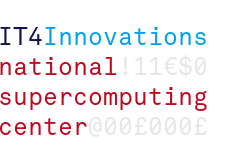Speaker
Dr
Jiri Jaros
(Brno University of Technology)
Description
**High-intensity focused ultrasound**
High-intensity focused ultrasound (HIFU) is a non-invasive therapy method which does not require puncturing the skin and typically has minimal or no side-effects. In HIFU therapy, focused ultrasound beams are used to create a rapid temperature rise in the focal point, which results in irreversible tissue damage due to coagulative thermal necrosis. HIFU therapy can be used clinically to treat cancerous tissue in organs such as kidney, liver or prostate, but the oncological outcomes have been variable. The major challenge is to ensure the ultrasound focus is accurately placed at the desired target, sufficient amount of energy is delivered to this point, and no harm is caused to healthy tissue.
**Clinical problem and treatment planning**
Due to the deep location of most cancer niduses, several tissue layers, including skin, fat, muscle, soft tissue or bones, lay in front of the treatment targets. These layers might significantly reduce the intensity of the ultrasound field due to attenuation. The effect of attenuation might be significant especially in the nonlinear case (high acoustic pressure levels) where higher harmonic frequencies generated during HIFU therapy are more strongly attenuated. In addition to attenuation, the defocusing of ultrasound due to refraction and the reflections at the tissue interfaces might result in significant loss of HIFU energy. The key factor to ensure high success rates of HIFU treatment is patient specific treatment planing based on the CT or MR scans.
**Numerical model**
The personalised HIFU treatment plans can be obtained by a coupled acoustic and thermal numerical models implemented in the k-Wave toolbox. Since the first beta release in 2010, k-Wave has rapidly become the de facto standard software in the field, with almost 8000 registered users in 60 countries (from both academia and industry). The toolbox now underpins a wide range of international research in ultrasound and photoacoustics, ranging from the reconstruction of clinical photoacoustic images to fundamental studies into the design of ultrasound transducers.
The acoustic model of ultrasound wave propagation in soft tissue is based on a generalised version of the Westervelt equation which accounts for nonlinearity, material heterogeneities and power law absorption. The governing equations are solved using a k-space pseudospectral approach where the Fourier collocation spectral method is used to calculate spatial gradients, and a k-space corrected finite difference scheme is used to integrate forwards in time. The thermal model is based on Penne bioheat equation solved by the same approach. The thermal model is fed by the acoustic intensity computed by the acoustic model during a single sonication. Consequently the formation of lesion is predicted.
**High-performance implementations**
The computation challenge in creating personalised treatment plans arises from the ultrasound simulation scale. The primary factors cover the wavelength of the highest harmonics needed (sub millimetres), the size of the simulation domain encompasses the target region, coupling medium and the ultrasound transducers (approx 20cm) and number of grid points per wavelength (5 to 10) to ensure numerical stability. The typical size of simulation domain is between 1152 x 1152x 1152 and 3072 x 3072 x 3072 grid points asking for 1.4 - 6.6 TB of RAM and between 50k and 250k of core hours.
**Discussion and outlook**
Personalised HIFU treatment planning provides a very powerful tool that can be leveraged for a range of tasks, including patient selection (determining whether a patient is a good candidate for a particular procedure based on their individual anatomy), treatment verification (determining the cause of adverse events or treatment failures), and model-based treatment planning (determining the best transducer position and sonication parameters to deliver the ultrasound energy to the planning target volume).
The main challenge is still satisfying the computational requirements of the simulation toolbox. We anticipate that to deliver the treatment plan within 24 hours, a supercomputer with more than 10,000 computer cores is needed.
Summary
We present a simulation based toolbox for developing patient specific cancer treatment plans being used in non-invasive high intensity focused ultrasound therapies. The main challenge of the computational complexity is mitigated by parallelisation using MPI, efficient domain decomposition and acceleration on multicore CPUs and GPUs. As far as we know, our ultrasound simulations belong among the biggest and most precise ever carried out. e.g. a realistic simulation in Liver consuming 6.6TB of RAM and running on 1536 Salomon's cores for more than two days.
Primary author
Dr
Jiri Jaros
(Brno University of Technology)
Co-author
Dr
Treeby E. Bradley
(University College London)

